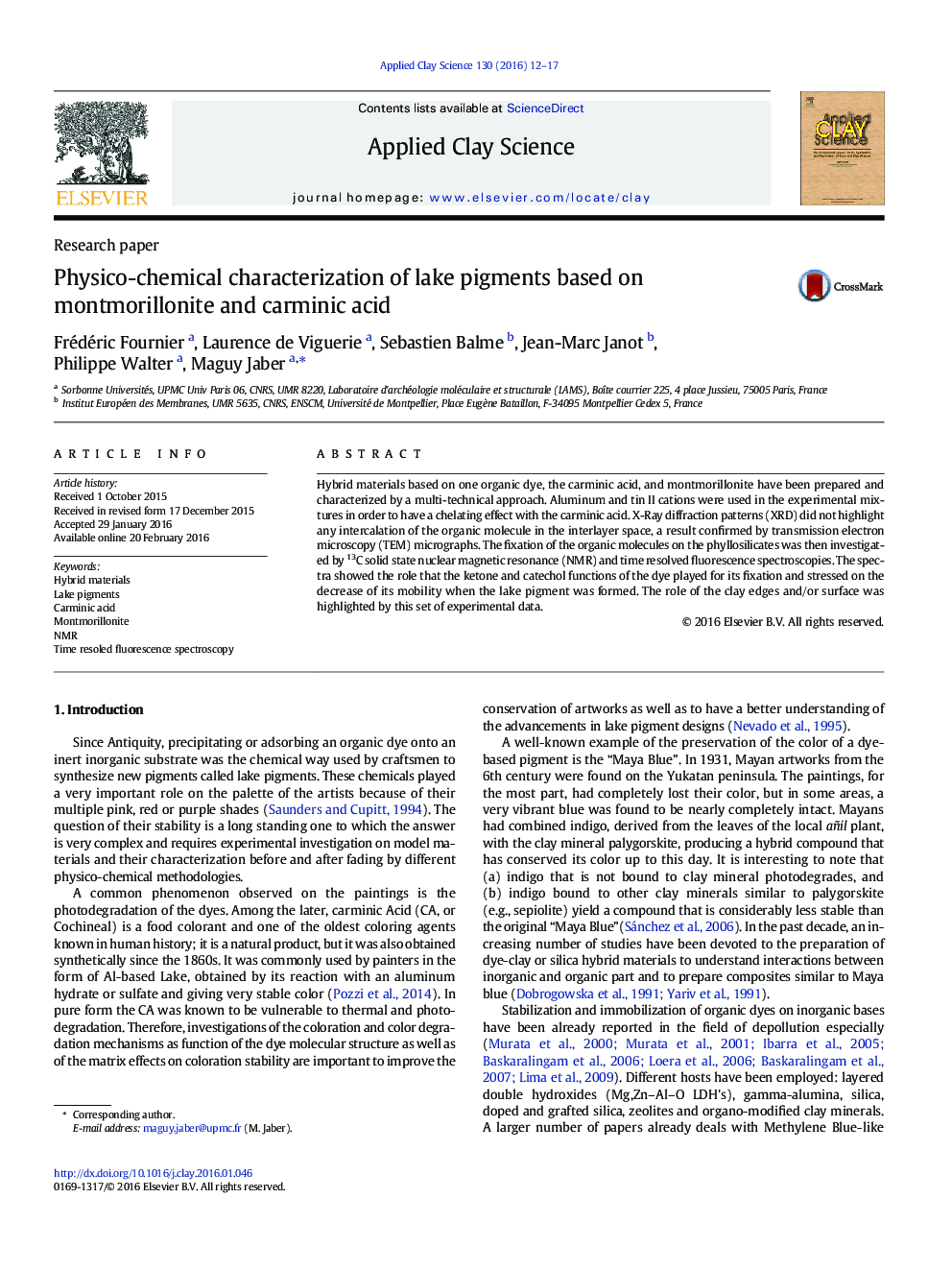| Article ID | Journal | Published Year | Pages | File Type |
|---|---|---|---|---|
| 1694005 | Applied Clay Science | 2016 | 6 Pages |
•Lake pigments based on montmorillonite and carminic acid were prepared in acidic and neutral medium.•The colors of the hybrid materials were pH dependent.•Interactions between the organic moieties and inorganic lattice were highlighted by 13C solid state NMR•Time resolved fluorescence experiments stressed on the rigidity of the organic dye in strong interaction with the surface.
Hybrid materials based on one organic dye, the carminic acid, and montmorillonite have been prepared and characterized by a multi-technical approach. Aluminum and tin II cations were used in the experimental mixtures in order to have a chelating effect with the carminic acid. X-Ray diffraction patterns (XRD) did not highlight any intercalation of the organic molecule in the interlayer space, a result confirmed by transmission electron microscopy (TEM) micrographs. The fixation of the organic molecules on the phyllosilicates was then investigated by 13C solid state nuclear magnetic resonance (NMR) and time resolved fluorescence spectroscopies. The spectra showed the role that the ketone and catechol functions of the dye played for its fixation and stressed on the decrease of its mobility when the lake pigment was formed. The role of the clay edges and/or surface was highlighted by this set of experimental data.
Graphical abstractFigure optionsDownload full-size imageDownload as PowerPoint slide
